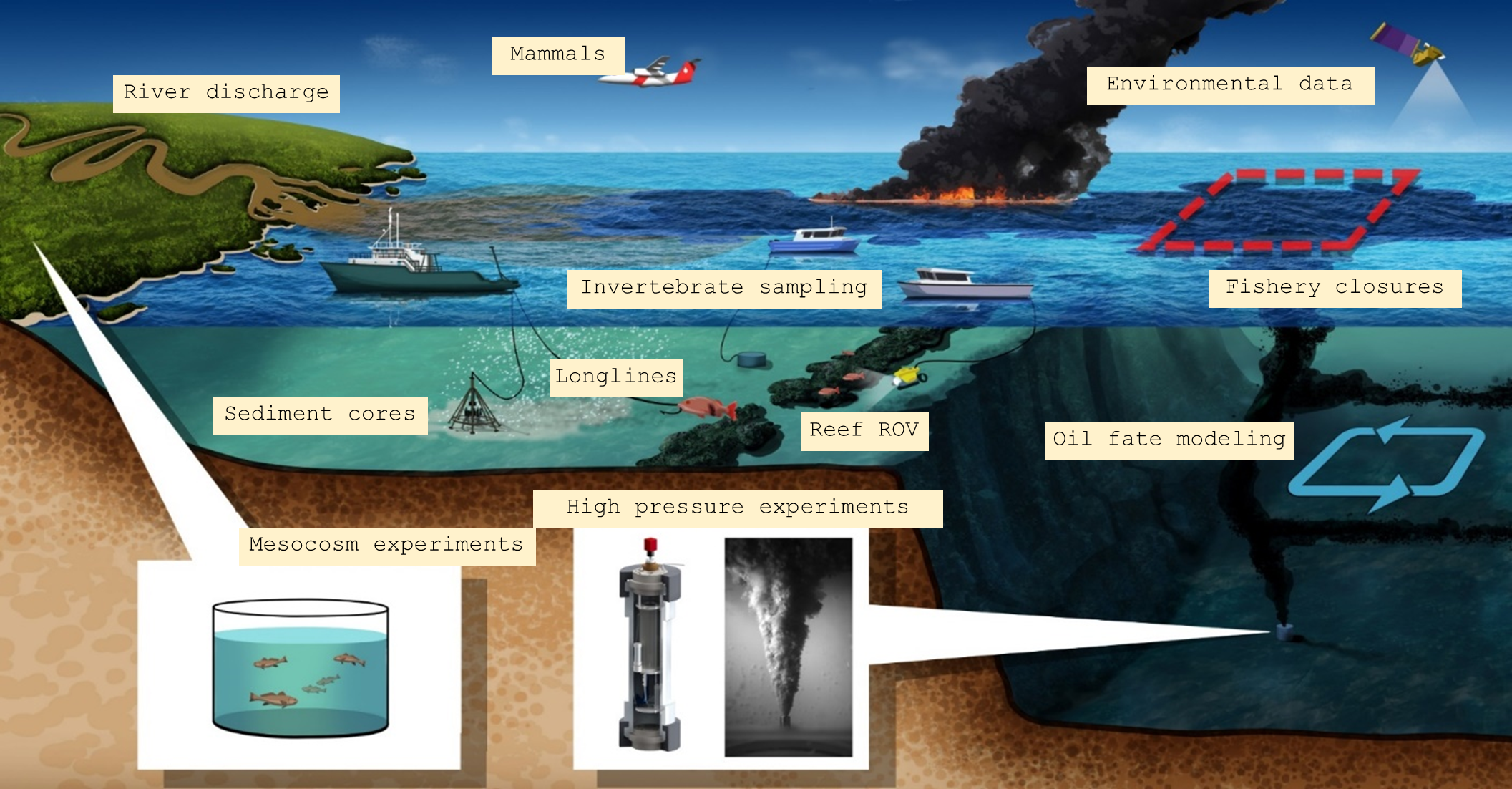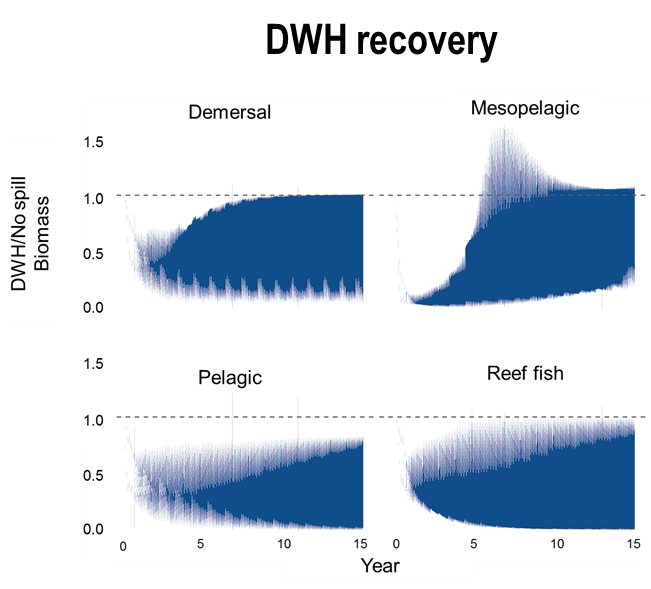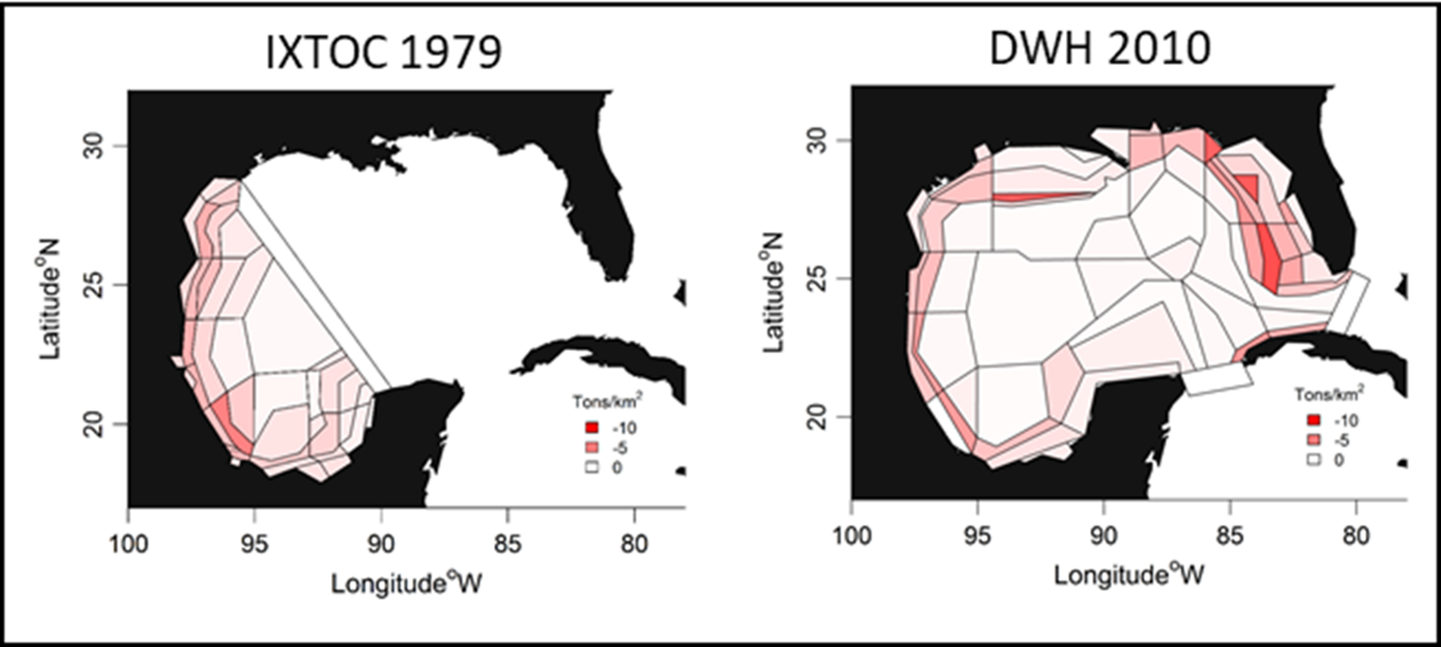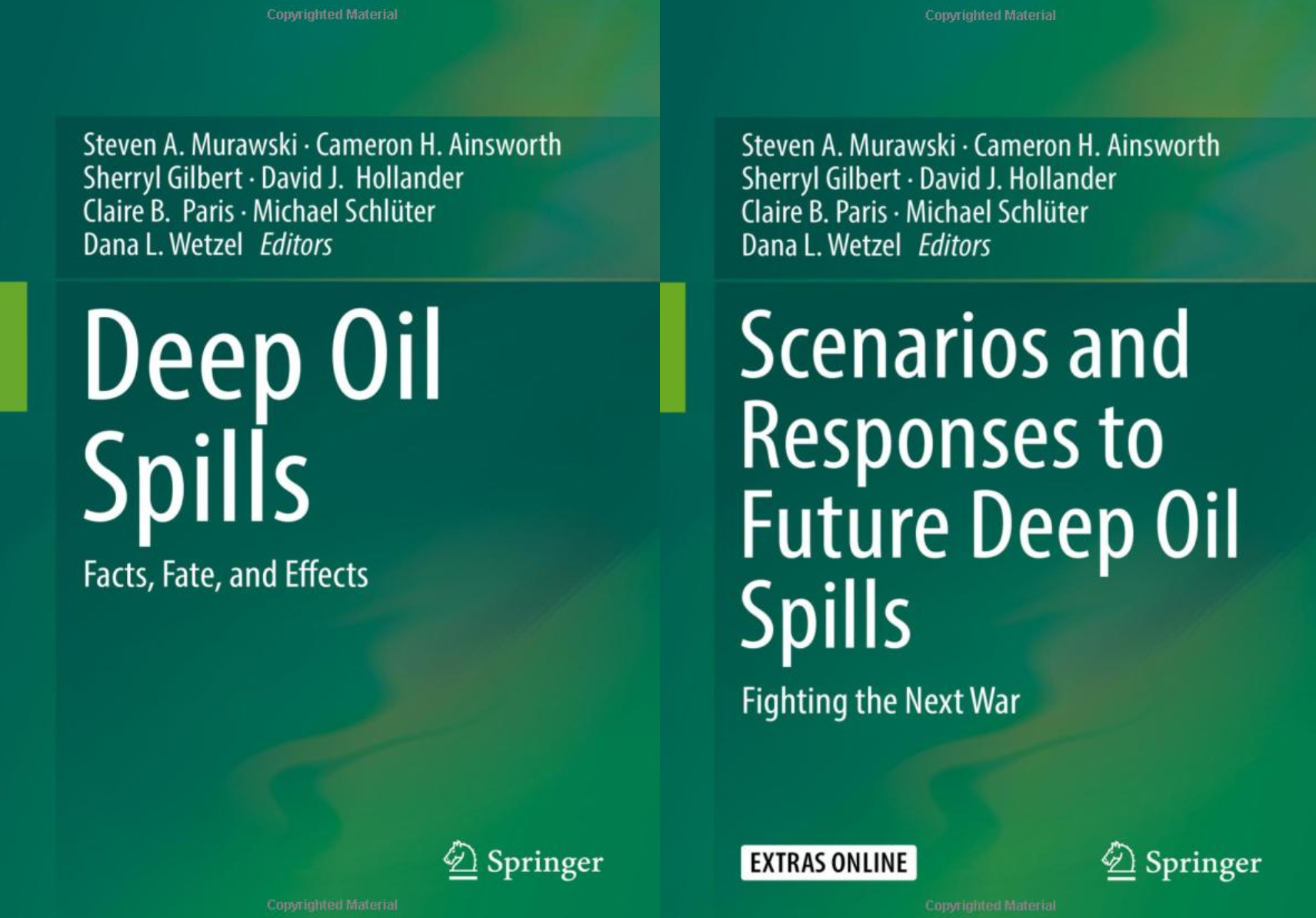Fisheries and Ecosystem Ecology Lab
Deepwater Horizon oil spill
The Ainsworth lab served on the C-IMAGE project based at the College of Marine Science from 2010 to 2020. C-IMAGE examined ecosystem effects of the 2010 Deepwater Horizon oil spill, which released 4.9 million barrels of oil into the Gulf of Mexico. As ecosystem modelers, the Ainsworth lab played an important role in this project synthesizing data from field and laboratory studies into a coherent picture. Oil spill data sources integrated in Atlantis came from 13 partner institutes in four countries. This work continues today as we apply what we have learned to better characterize ecosystem connectivity in the Gulf of Mexico.

Artwork by Jay White. Draw Or Be Drawn. draworbedrawn.com
Oil spill simulations using Atlantis take advantage of cloud computing and statistical emulators to allow us a sophisticated representation of uncertainty. Morzaria-Luna et al. 2022 showed a decline and subsequent recovery after the DWH oil spill for species groups using 10000+ simulations varying assumptions on diet composition.

Morzaria Luna et al. (2022) used cloud computing and statistical emulators to characterize the uncertainty in Deepwater Horizon oil spill ecosystem simulations.
We compared the Deepwater Horizon oil spill (2010) against the IXTOC oil spill (1979) which occurred in the Southern Gulf of Mexico. The IXTOC oil moved relatively quickly through the system, while the Deepwater Horizon oil remained stationary and had more sustained impact on the environment.

We developed the Campeche Bay Atlantis model to compare the IXTOC and Deepwater Horizon oil spills.

Further reading
Ainsworth, C.H., Paris, C., Perlin, N., Dornberger, L.N., Patterson, W., Chancellor, E., Murawski, S., Hollander, D., Daly, K., Romero, I., Coleman, F., Perryman, H. 2018. Impacts of the Deepwater Horizon oil spill evaluated using an end-to-end ecosystem model. PLoS One. 2018 Jan 25;13(1):e0190840. doi: 10.1371/journal.pone.0190840.
Ainsworth, C.H., Chassignet, E.P., French-McCay, F., Beegle-Krause, C.J., Berenshtein, I., Englehardt, J., Fiddaman, T., Huang, H., Huettel, M., Justic, D., Kourafalou, V.H., Liu, Y., Mauritzen, C., Murawski, S., Morey, S., Ozgokmen, T., Paris, C.B., Ruzicka, J., Sual, S., Shepherd, J., Socolofsky, S., Solo Gabriele, H., Sutton, T., Weisberg, R.H., Wilson, C., Zheng, L., Zheng, Y. 2021. Ten Years of Modeling the Deepwater Horizon Oil Spill. Environmental Modeling and Software, 142: 105070.
Court, C., Hodges, A.W., Coffey, K., Ainsworth, C.H., Yoskowitz, D. 2020. Effects of the Deepwater Horizon oil spill on human communities: catch and economic impacts. Chapter 33 in: Murawski S.A., Ainsworth C.H., Gilbert S., Hollander D., Paris C.B., Schlüter M., Wetzel D. (Eds.) Deep Oil Spills – Facts, Fate and Effects. Springer.
Dornberger, L., Ainsworth, C.H., Gosnell, S. and Coleman, F. 2016. Developing a polycyclic aromatic hydrocarbon exposure dose-response model for fish health and growth. Marine Pollution Bulletin, 109(1): 259-266.
Morzaria-Luna, H.N., Ainsworth, C.H., Scott, R.L., 2022. Impacts of deep-water spills on mesopelagic communities and implications for the wider pelagic food web. Marine Ecology Progress Series, 681: 37-51.